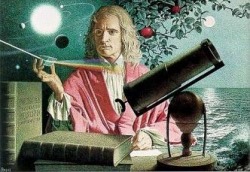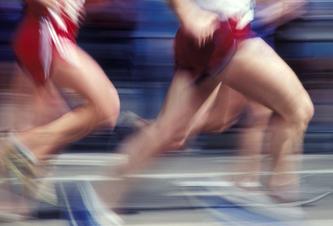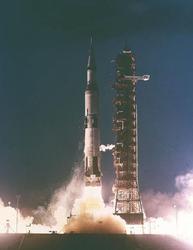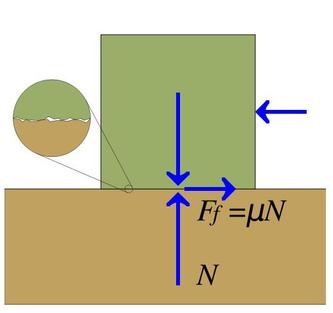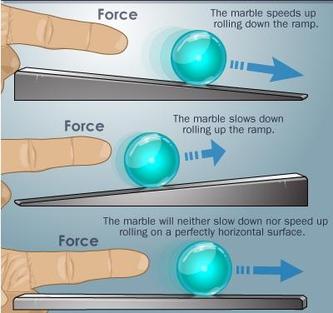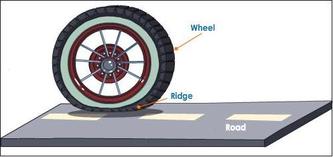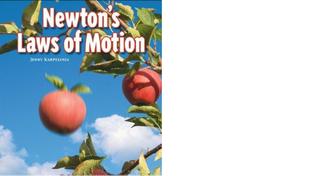Study Of Physics
CH.4 Motion and Force
Sir Isaac Newton was one of the greatest scientists and mathematicians that ever lived. He was born in England on December 25, 1643. He was born the same year that Galileo died. He lived for 85 years.
Newton had new ideas about motion, which he called his three laws of motion. He also had ideas about gravity, the diffraction of light, and forces. Newton's ideas were so good that Queen Anne knighted him in 1705. His accomplishments laid the foundations for modern science and revolutionized the world. Sir Isaac Newton died in 1727.
Newton concentrated on mathematics and physics formulating his theories of optics, integral and differential calculus, and gravity. There is a famous story about Isaac Newton sitting in his garden and a falling apple. Although most writers do not believe the apple fell on his head, many report that the falling apple inspired Newton to explore why the apple fell.
n 1668, Newton invented, designed, and assembled the first reflective telescope, which gave a sharper image of distant planets and bodies. Many believe Newton’s greatest scientific contributions were to calculus, physics and celestials mechanics. Newton wrote Principia and explained the motion of projectiles, pendulums, free-falling objects and celestial bodies. Newton studied optics and discovered that white light was made up of many colored lights. He later wrote Opticks, in 1704, chronicling his discoveries thoughts and theories on light.
n 1705, Isaac Newton was the first scientist to be knighted when Queen Anne honored him. Upon his death, in 1727, Sir Isaac Newton became the first scientist to be buried at Westminster Abbey
n 1668, Newton invented, designed, and assembled the first reflective telescope, which gave a sharper image of distant planets and bodies. Many believe Newton’s greatest scientific contributions were to calculus, physics and celestials mechanics. Newton wrote Principia and explained the motion of projectiles, pendulums, free-falling objects and celestial bodies. Newton studied optics and discovered that white light was made up of many colored lights. He later wrote Opticks, in 1704, chronicling his discoveries thoughts and theories on light.
n 1705, Isaac Newton was the first scientist to be knighted when Queen Anne honored him. Upon his death, in 1727, Sir Isaac Newton became the first scientist to be buried at Westminster Abbey
Ch.04: Motion And Force 4.1 :- Newton's Law of Motion
4.2 :- Mass and Weight
4.3 :- Tension in a String
4.4 :- Momentum
4.5 :- Law of Conservation of
Momentum
4.6 :- Friction
4.7 :- Rolling Friction
4.8:- Methods to Reduce Friction
4.2 :- Mass and Weight
4.3 :- Tension in a String
4.4 :- Momentum
4.5 :- Law of Conservation of
Momentum
4.6 :- Friction
4.7 :- Rolling Friction
4.8:- Methods to Reduce Friction
Ch.05: Vectors
Ch.06: Equilibrium
Ch.07: Circular Motion and Gravition
Ch.08: Work,Power And Energy
Ch.09: Simple Machines
Ch.10: Properties of Matter
Ch.11: Heat
Ch.06: Equilibrium
Ch.07: Circular Motion and Gravition
Ch.08: Work,Power And Energy
Ch.09: Simple Machines
Ch.10: Properties of Matter
Ch.11: Heat
